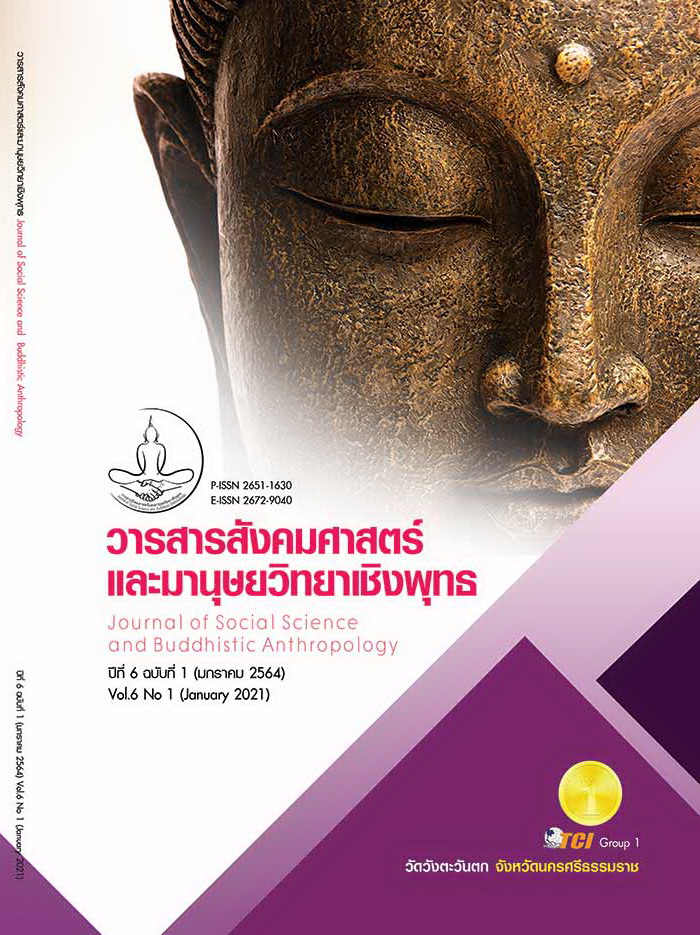STRATEGY DEVELOPMENT OF ORCHID OPERATORS FOR THE EXPORT
Keywords:
Strategy, Orchid Production Business, ExportAbstract
The objectives of this study were to 1) investigate the operations, problems and obstacles in orchid production business 2) to study the components and develop a strategic of a strategic plan for the export purposes. The research is mixed method. It consists of qualitative research. The samples are included 5 orchid producers and quantitative research. The samples which included 350 orchid producers, the tools in this study was questionnaires, the statistics used were percentage, mean, standard deviation, Pearson correlation coefficient and stepwise multiple regression analysis. The results showed that 1) the sales and export of the products from various countries were flexible - decreased, stable and increased, most of the major trading partners are in Asia, especially Japan and China. The business strengths is the cultivated species could be grown in the climate in Thailand. The problem and obstacles include transportation, negotiation, language and culture, economic problems and lack of quality personnel 2) Factors that can predict the success of the development of knowledge entrepreneurs by 60.00 percent, 6 factors, skills in 37.00 percent, 3 factors and other abilities 51.30 percent, 4 factors. The development strategies was contained 3 main components: knowledge, skills and other abilities and 13 sub-components: knowledge management, experience, create strength point, build cooperation with educational institutions and financial institutions, innovation management, marketing management, overall quality management, set goals business, environmental management, inventing a new type of orchid, honest and virtue and manage personnel in the organization.
References
กนกพัชร วงศ์อินทร์อยู่ และศานติ ดิฐสถาพรเจริญ. (2563). ปัจจัยที่ส่งผลกระทบต่อการส่งออกกล้วยไม้ไทยไปจำหน่ายในประเทศญี่ปุ่น. เรียกใช้เมื่อ 28 กรกฎาคม 2563 จาก http://dept.npru.ac.th/msc/data/files/research5508.pdf
กรมส่งเสริมการเกษตร. (2563). แผนการปฏิบัติงานด้านกล้วยไม้ พ.ศ. 2563-2565. เรียกใช้เมื่อ 30 กรกฎาคม 2563 จาก http://www.agriman.doae.go.th
ชนิตา พันธุ์มณี และอัมรินทร์ คีรีแก้ว. (2558). แนวทางการพัฒนาศักยภาพของเกษตรกรผู้ปลูกกาแฟ อาราบิกาอินทรีย์ในภาพเหนือของประเทศไทย: การประยุกต์ใช้แนวคิดห่วงโซ่คุณค่า. ใน รายงานการวิจัย. มหาวิทยาลัยแม่โจ้.
เดชา เดชะวัฒนไพศาล. (2543). Competency–Based Human Resources Management. กรุงเทพมหานคร: HR Magazine.
ธานินทร์ ศิลป์จารุ. (2551). การวิจัยและวิเคราะห์ข้อมูลทางสถิติด้วย SPSS. กรุงเทพมหานคร: วี.อินเตอร์พรินท์.
บุษรินทร์ จีนเกิดทรัพย์ และณัฐสพันธ์ เผ่าพันธุ์. (2558). ปัจจัยที่ส่งผลต่อความสามารถในการแข่งขันของธุรกิจส่งออกกล้วยไม้ไทย. วารสารบัณฑิตศึกษา มหาวิทยาลัยสุโขทัยธรรมาธิราช, 5(1), 1-7.
พัชราภรณ์ สีโหมดสุข. (2558). ธุรกิจส่งออกกล้วยไม้ตัดดอกของผู้ส่งออกในจังหวัดนครปฐม สมุทรสาคร และนนทบุรี. วารสารบัณฑิตวิทยาลัย, 3(3), 185-192.
สถาบันค้นคว้าและพัฒนาผลิตผลทางการเกษตรและอุตสาหกรรมเกษตร. (2561). การใช้ภูมิสารสนเทศเพื่อการสำรวจเส้นทางกล้วยไม้. เรียกใช้เมื่อ 15 ธันวาคม 2561 จาก http://www.orchid.kapi.ku.ac.th/index.php?option=com_frontpage&Itemid=1
สำนักงานเศรษฐกิจการเกษตร. (2560). ข้อมูลการผลิตสินค้าเกษตร กล้วยไม้. เรียกใช้เมื่อ 20 มีนาคม 2562 จาก http://www.oae.go.th
สำนักงานส่งเสริมการค้าสินค้าการเกษตรและอุตสาหกรรม. (2561). กล้วยไม้ไทย. เรียกใช้เมื่อ 23 พฤษภาคม 2563 จาก https://www.ditp.go.th/contents_attach/216217/216217.pdf
Gibson Jame L. et al. (1982). Organization : Behavior Structure, Process. (6th ed.). Texas: Business Publication.
heysf@88. (2560). กล้วยไม้. เรียกใช้เมื่อ 20 มีนาคม 2562 จาก http://heysf.org/กล้วยไม้
McClelland, D.C. (1975). A Competency model for human resource management specialists to be used in the delivery of the human resource management cycle. Boston: Mcber.








